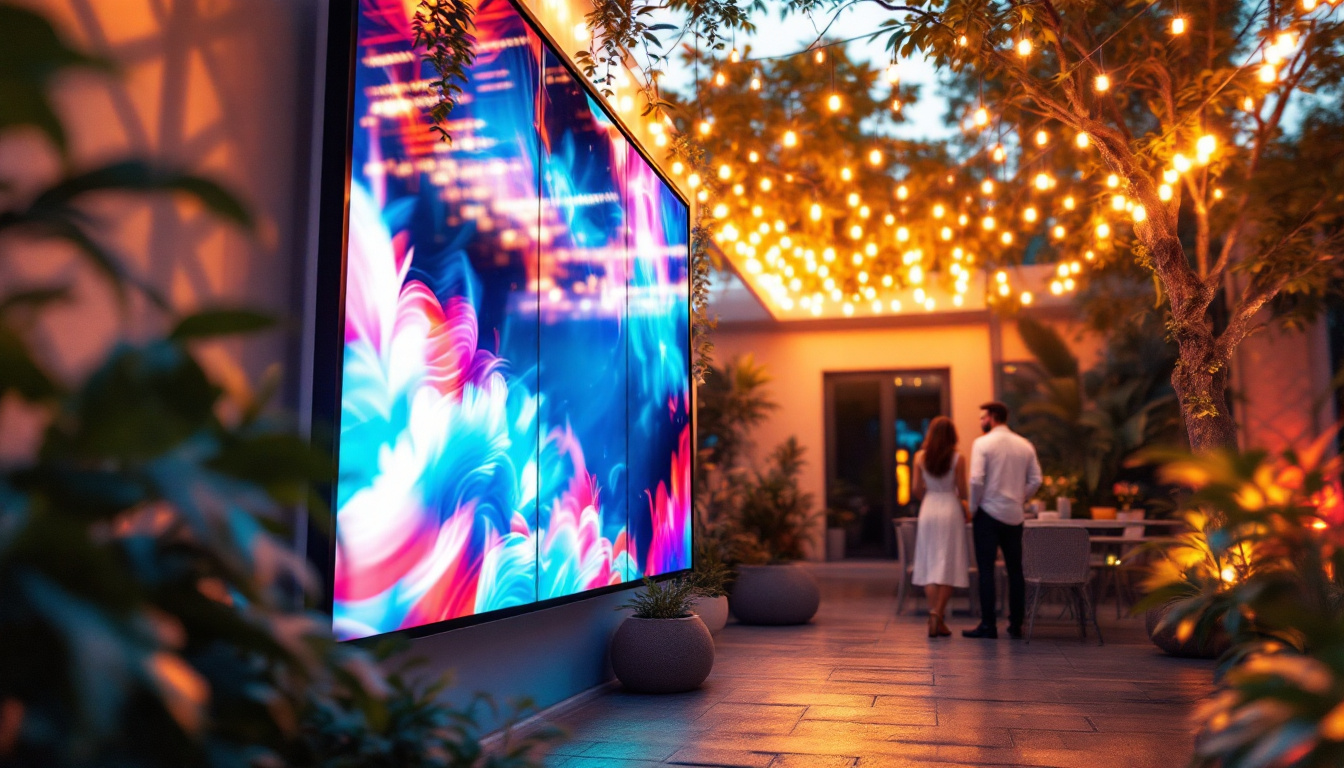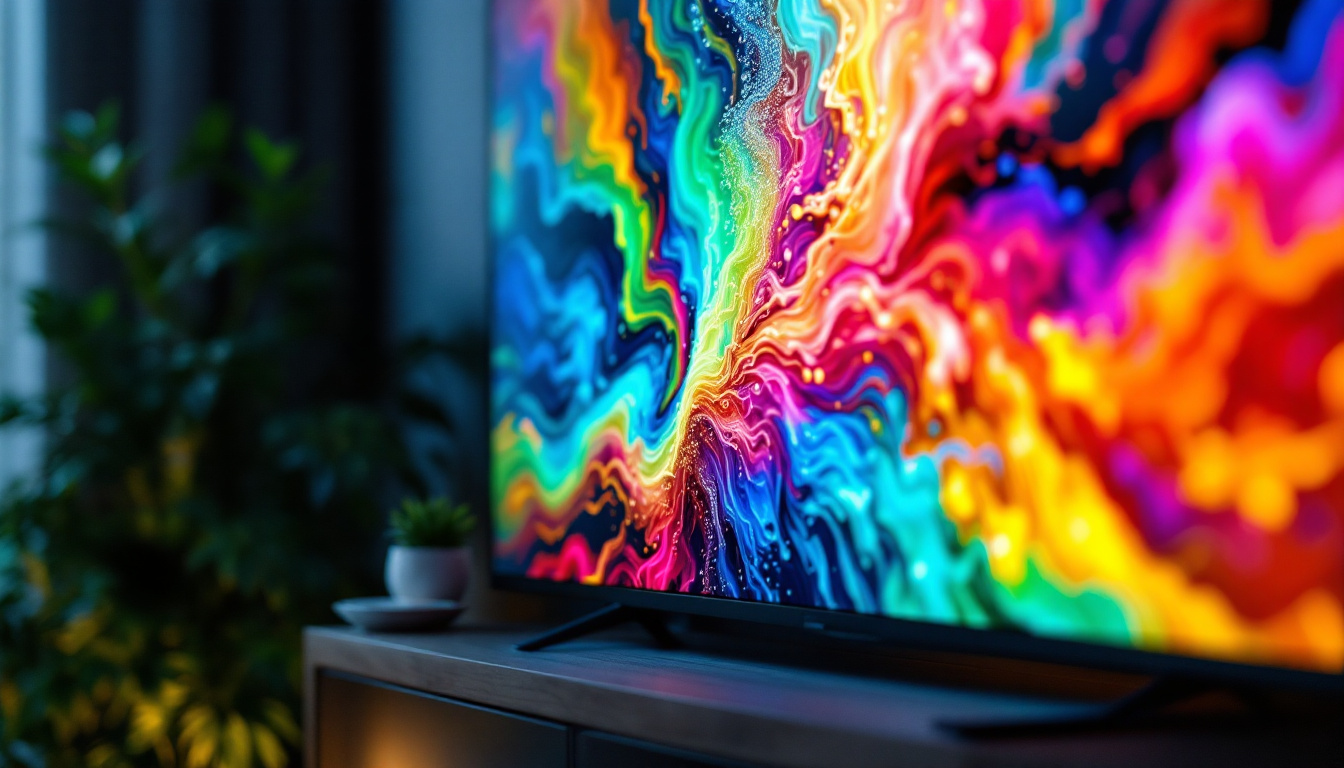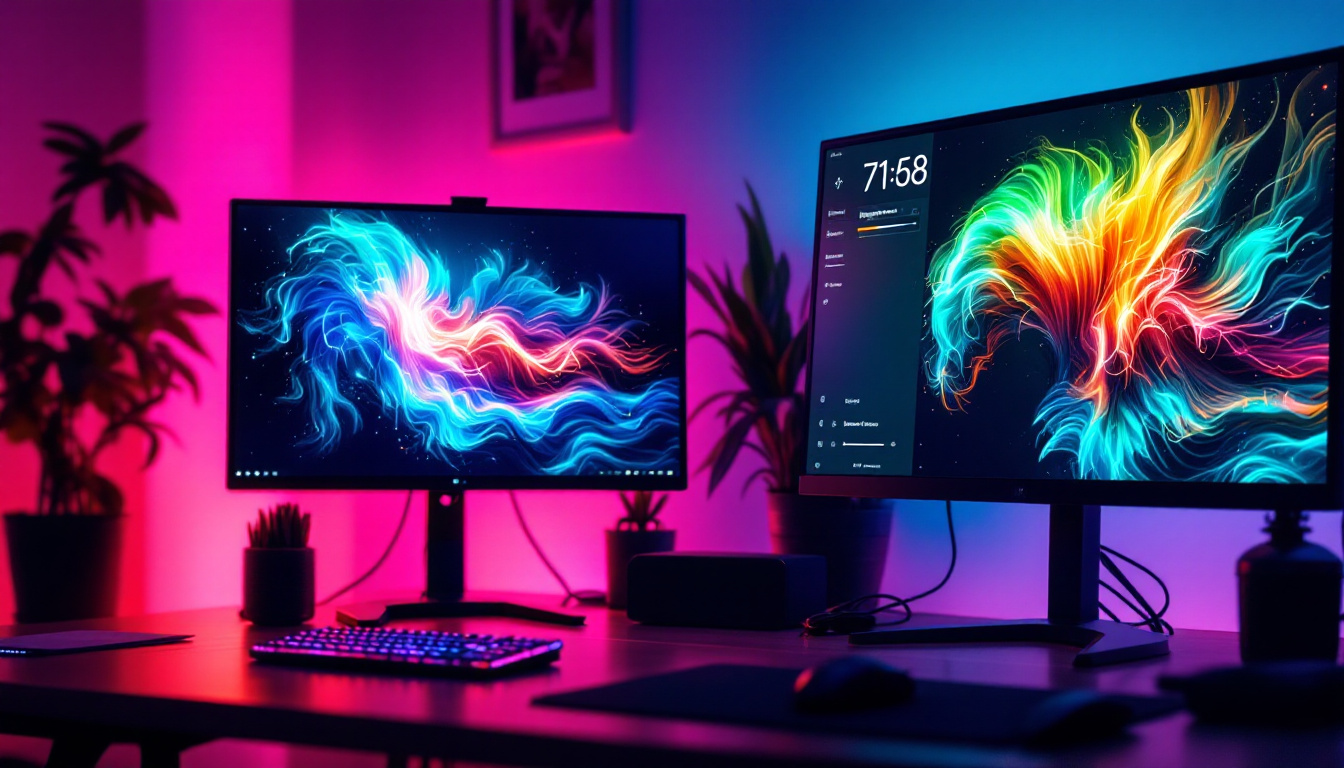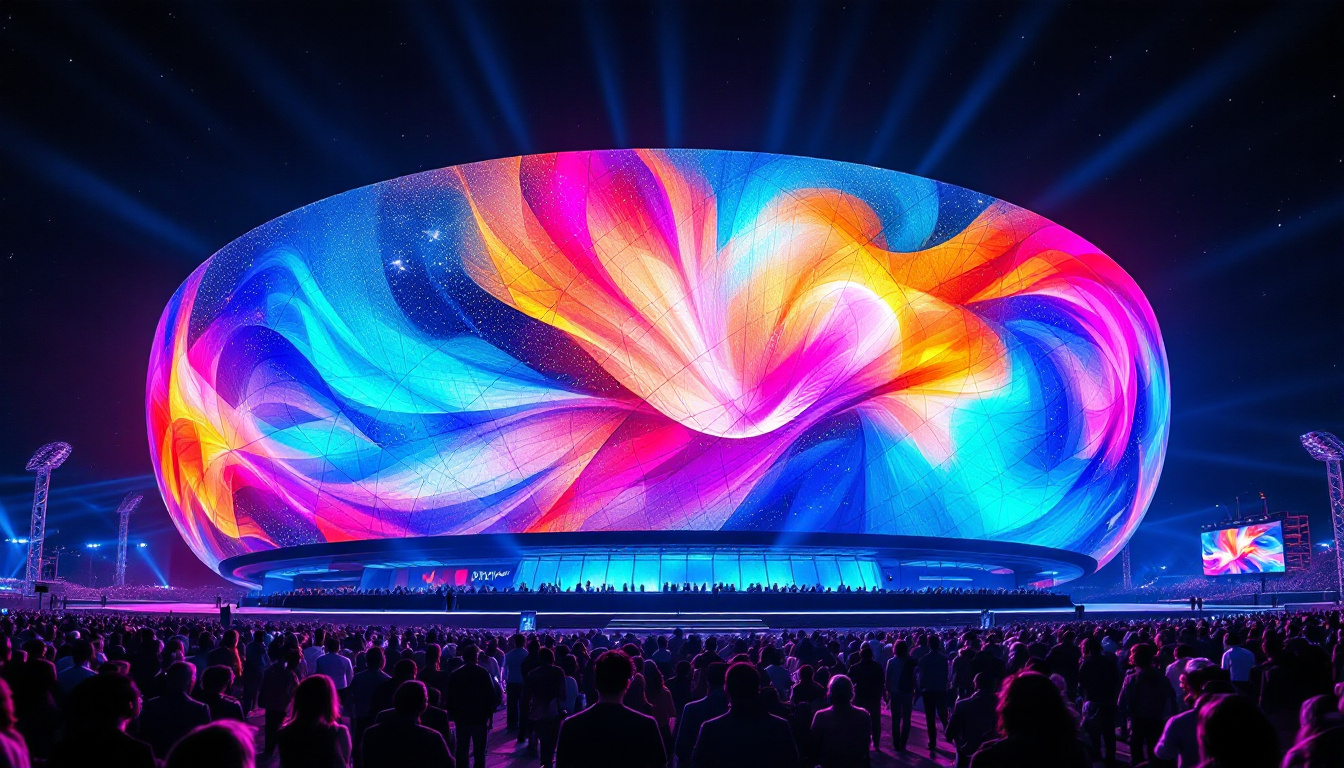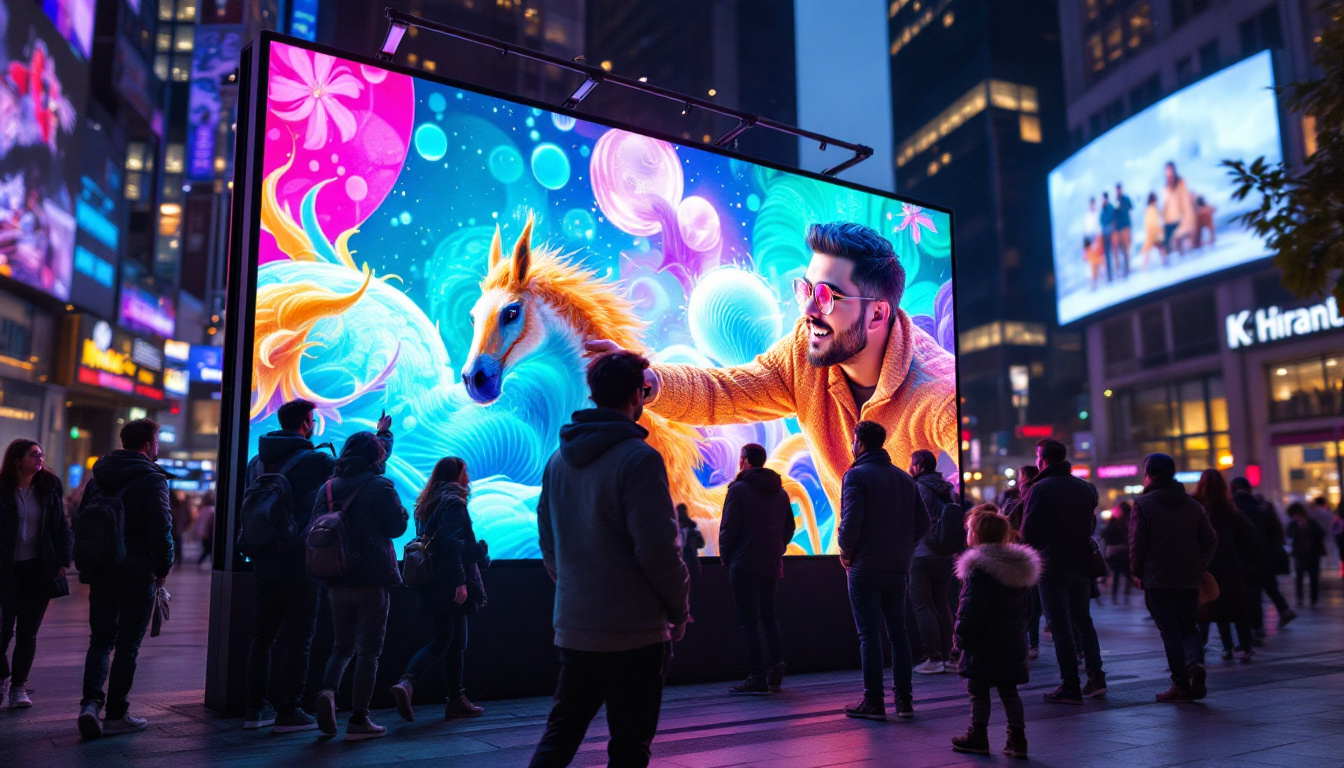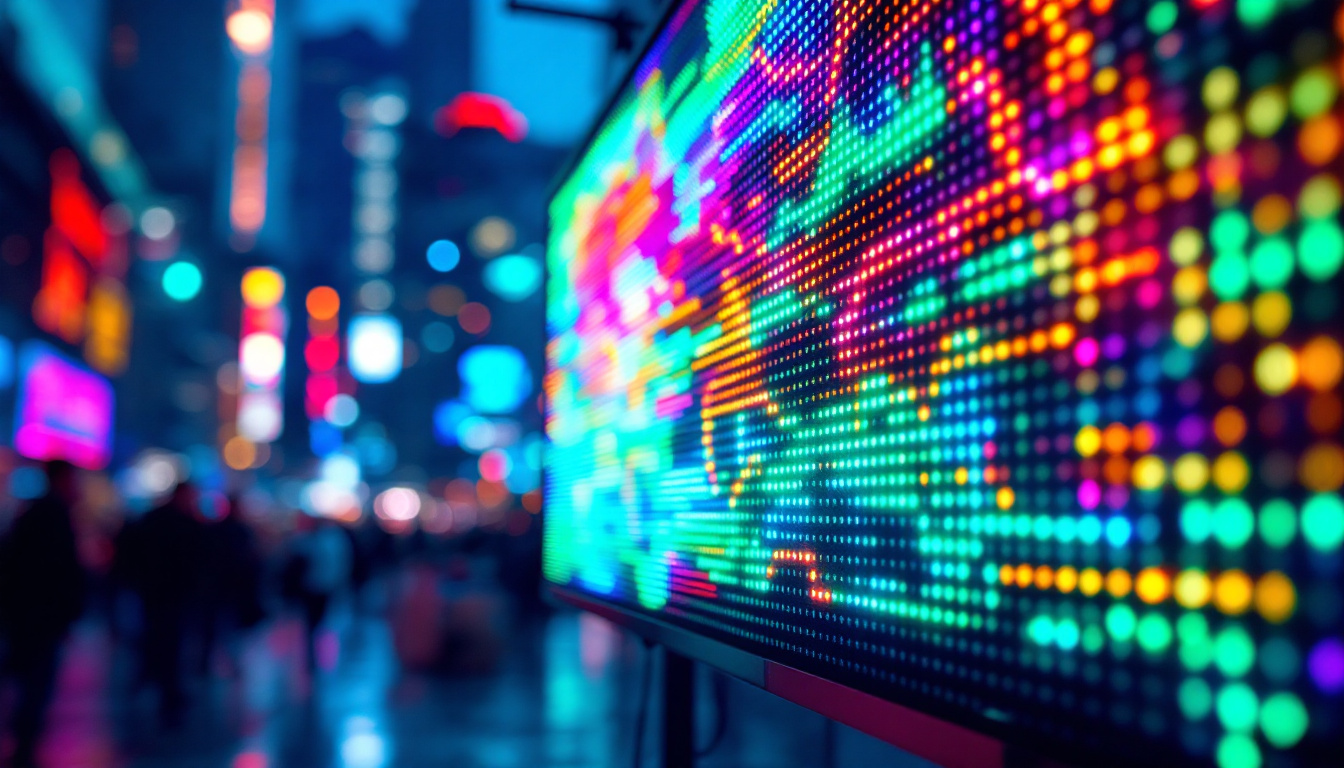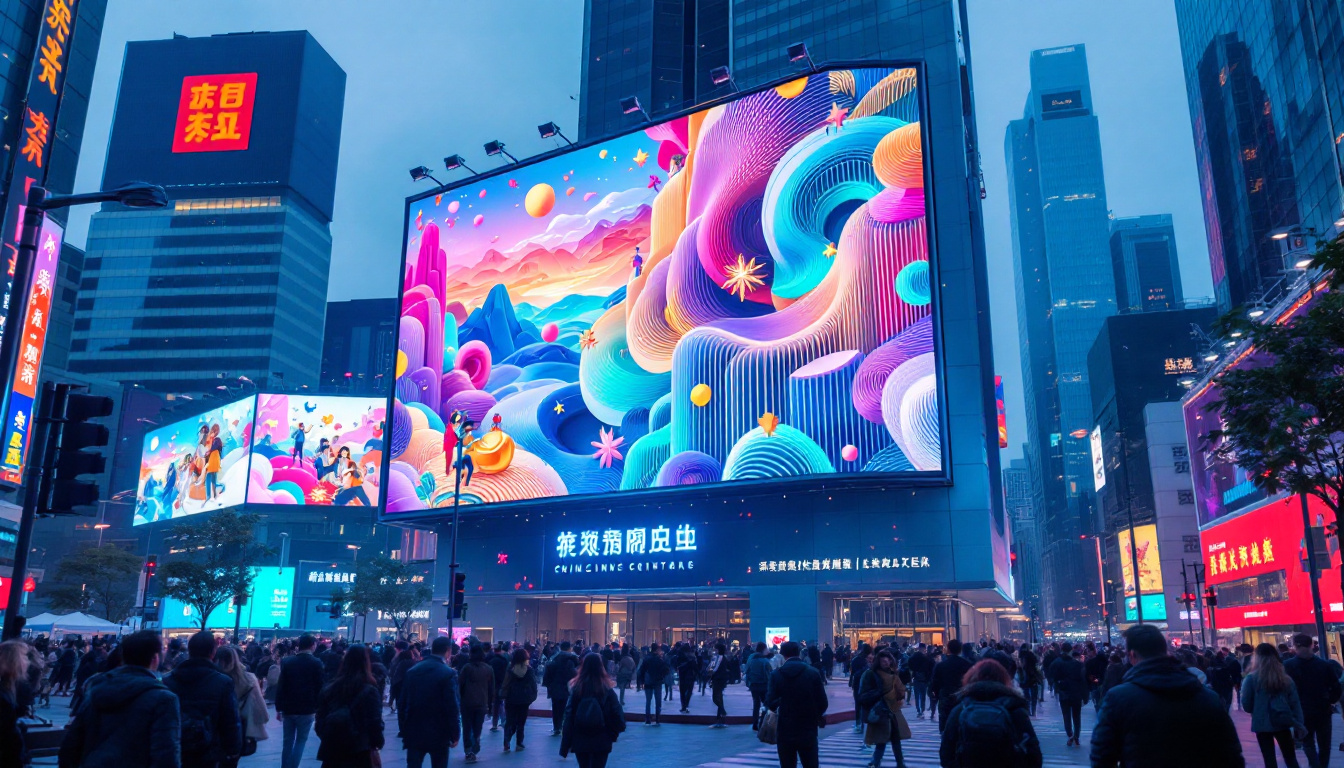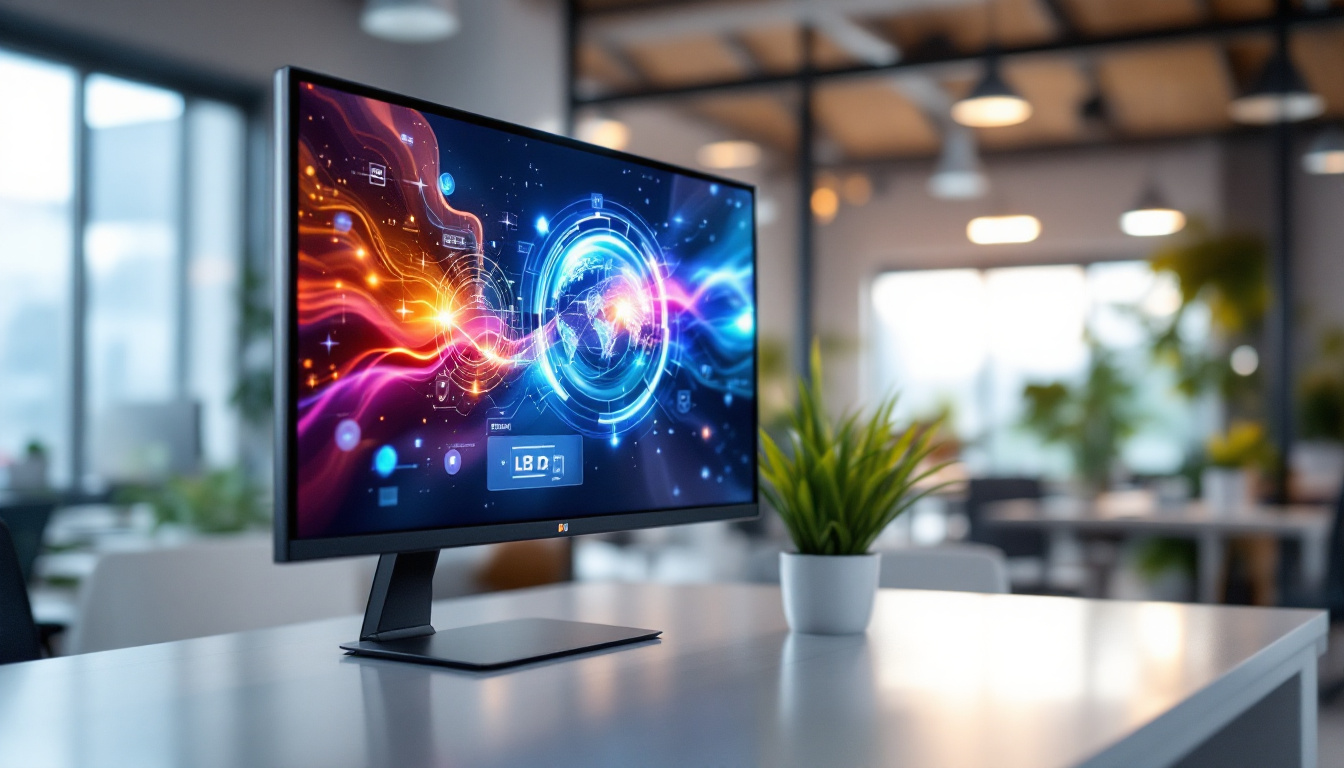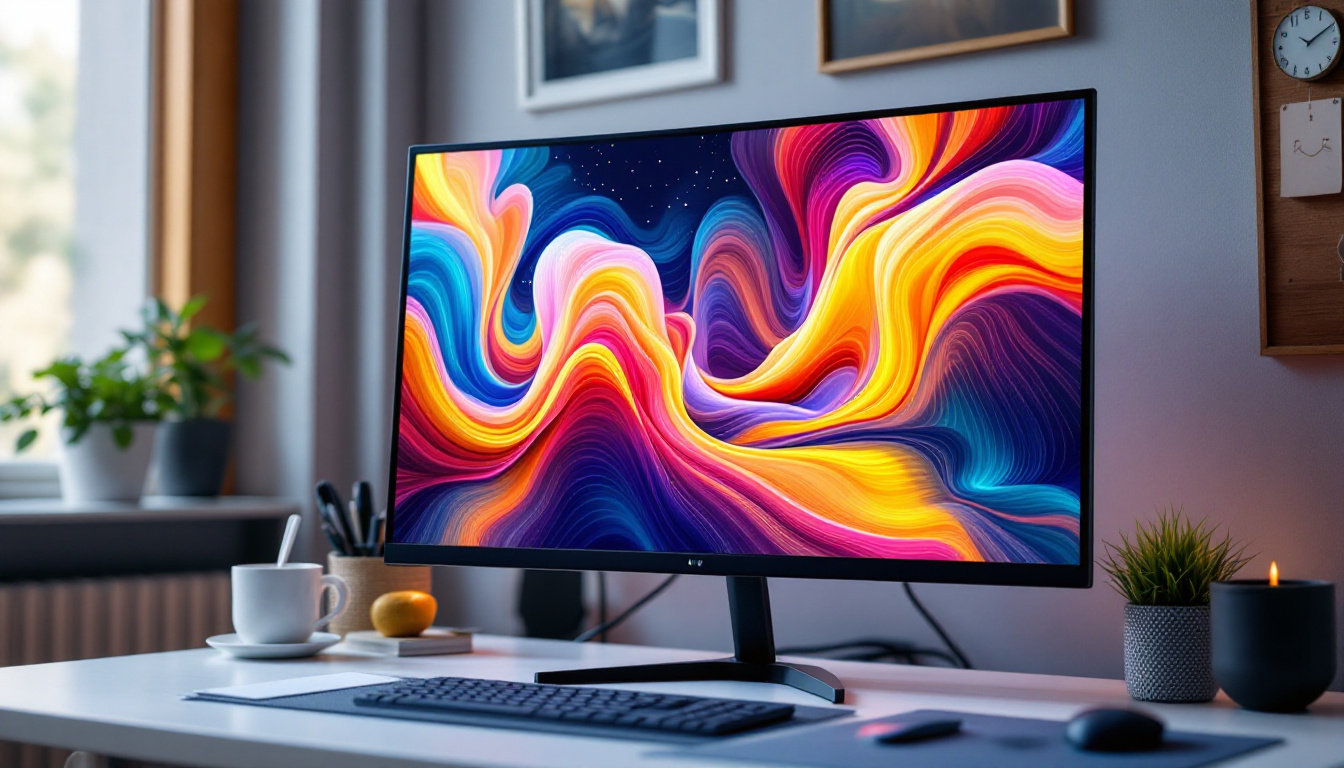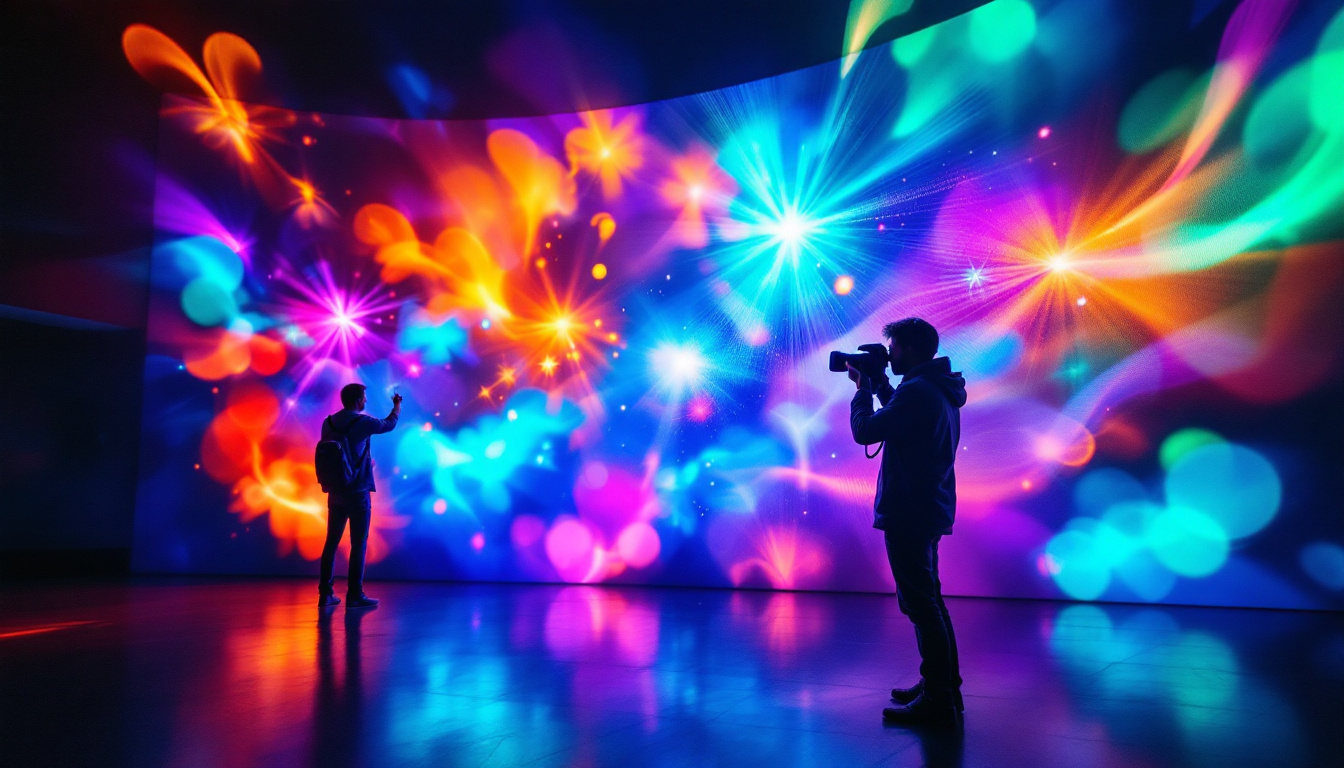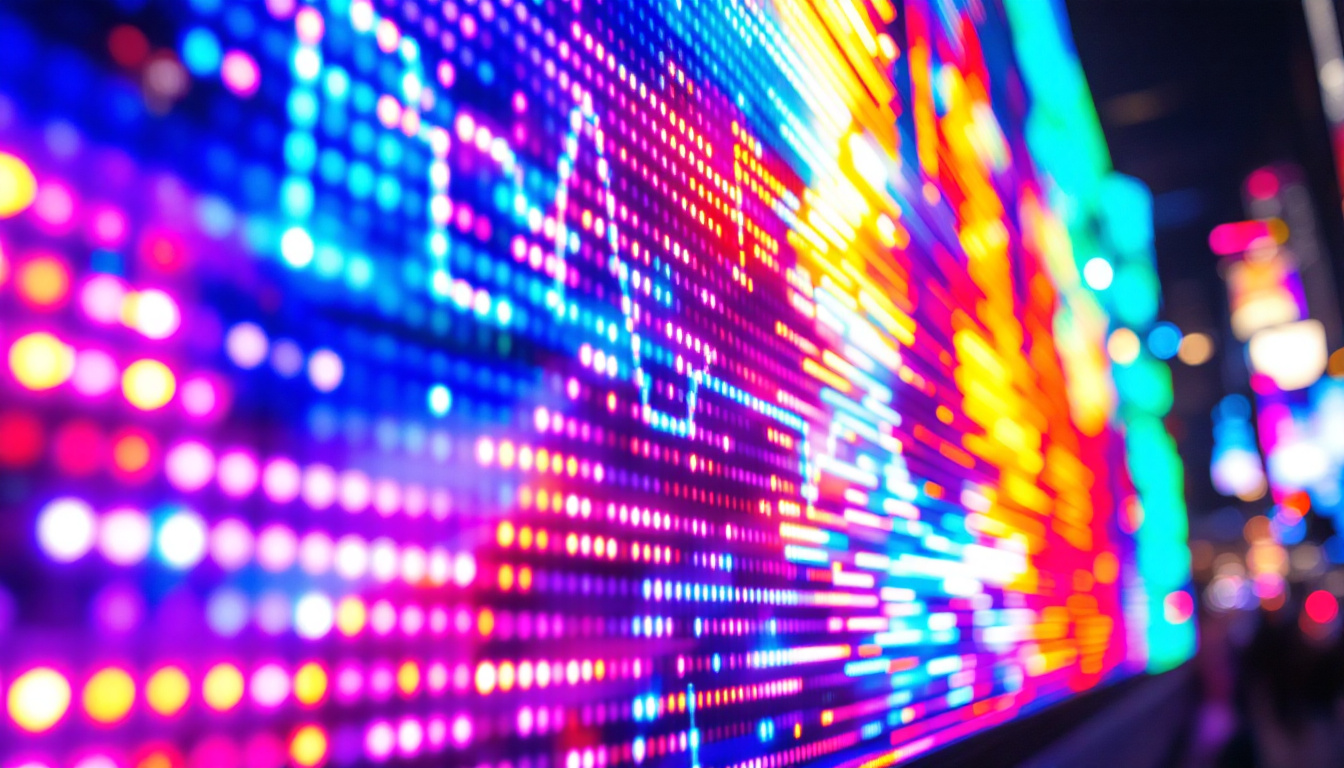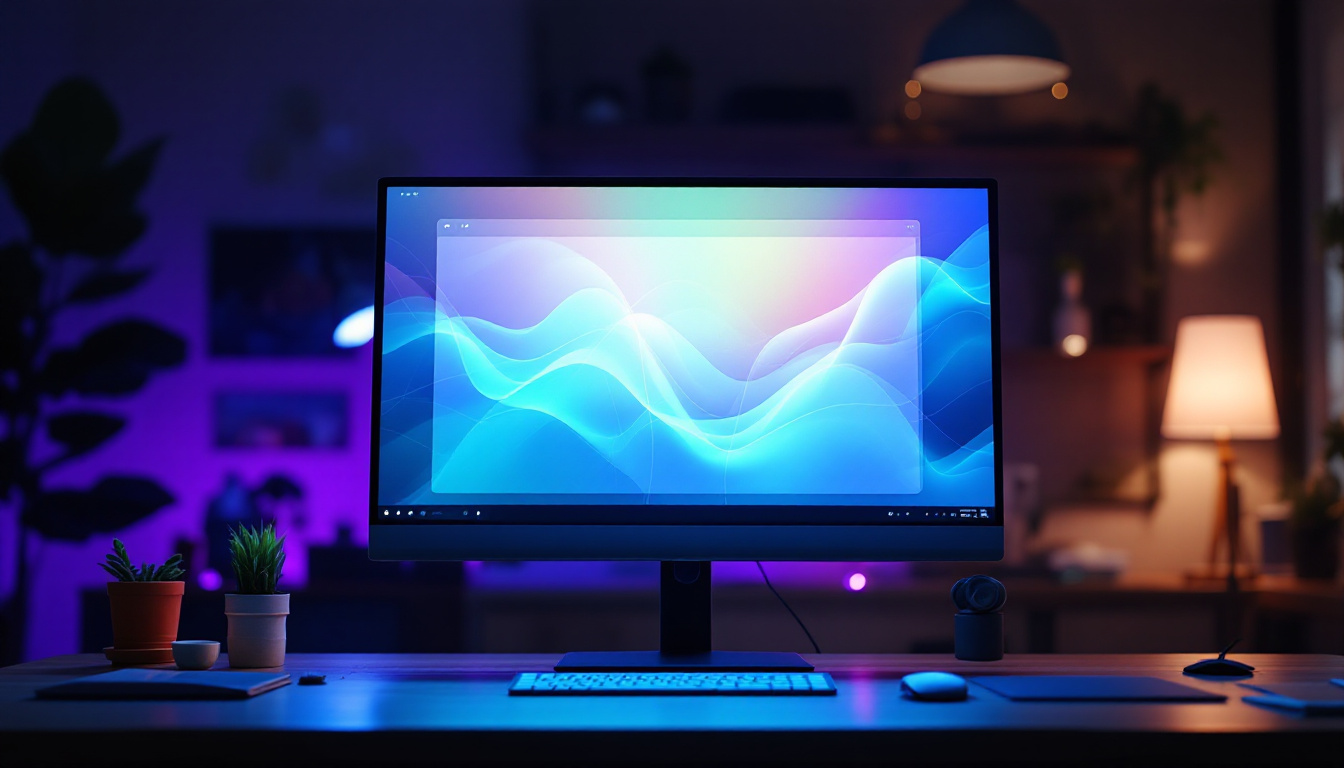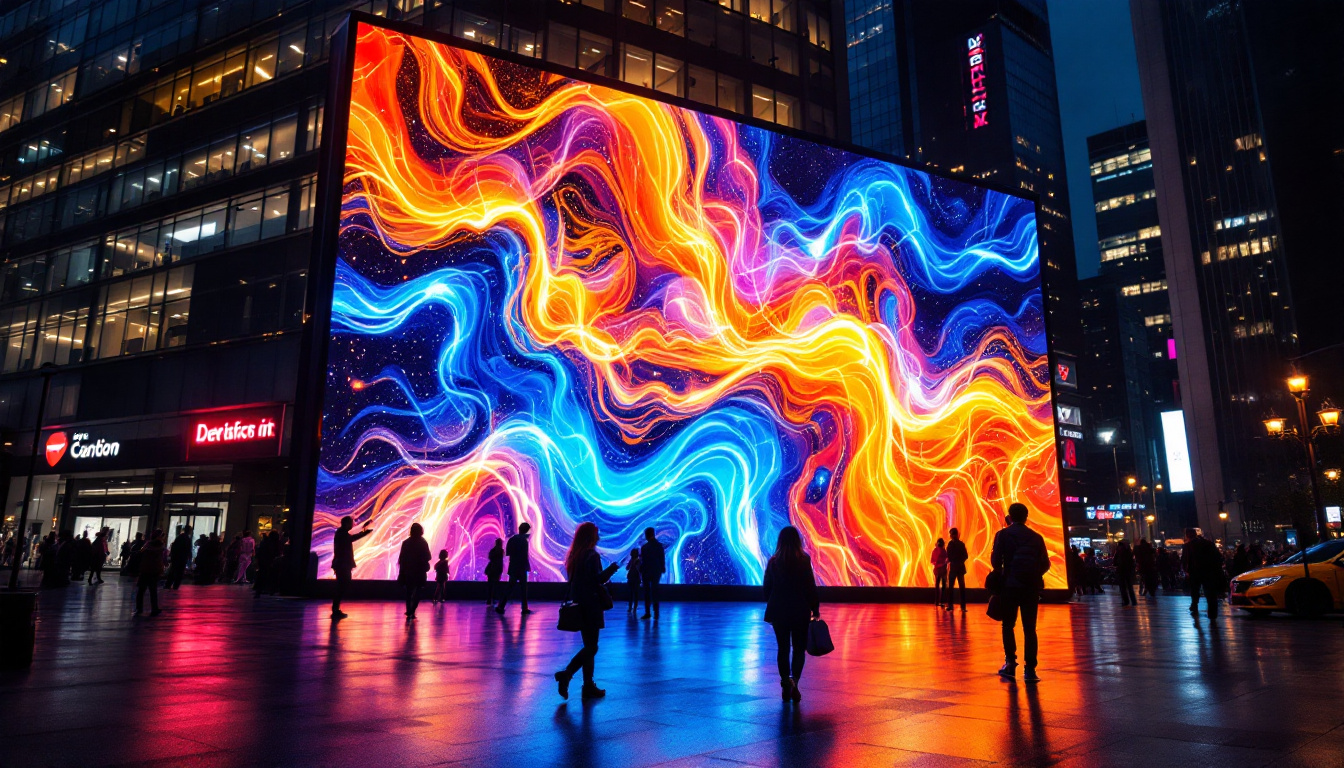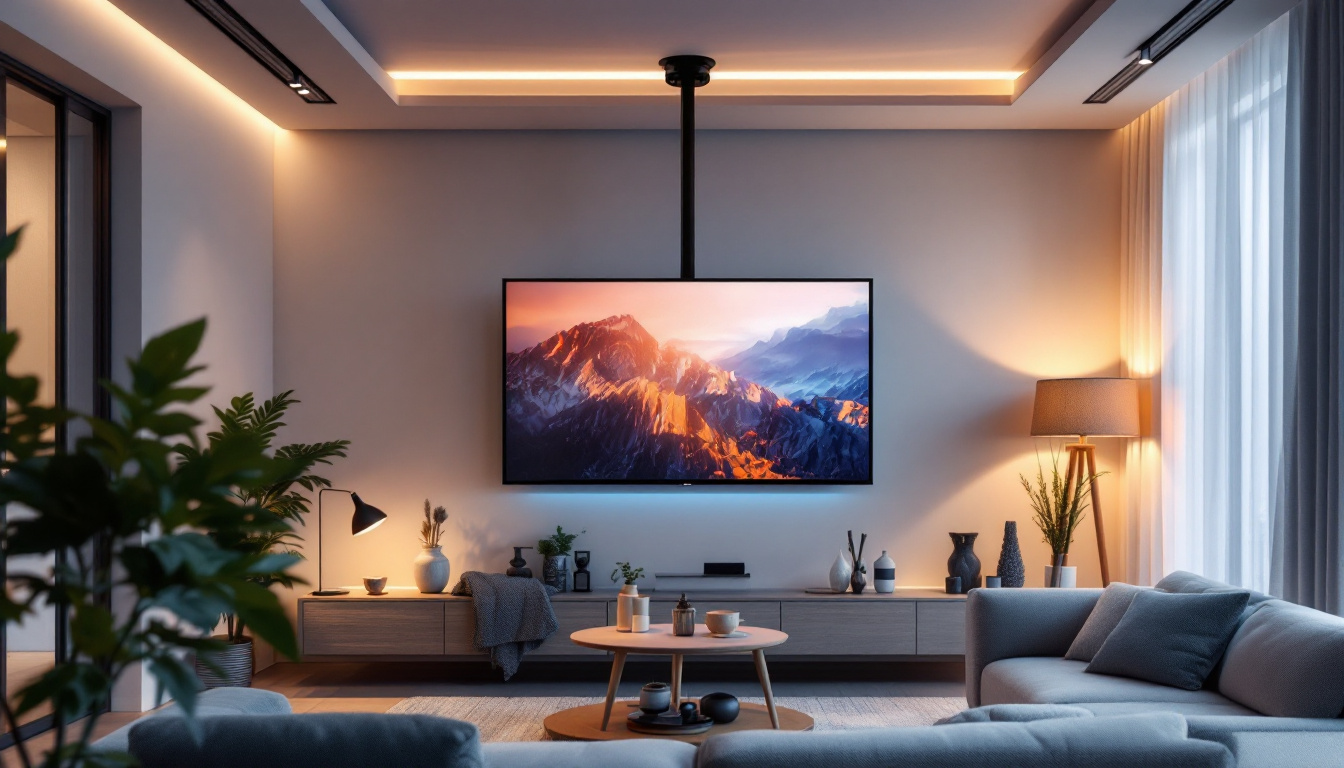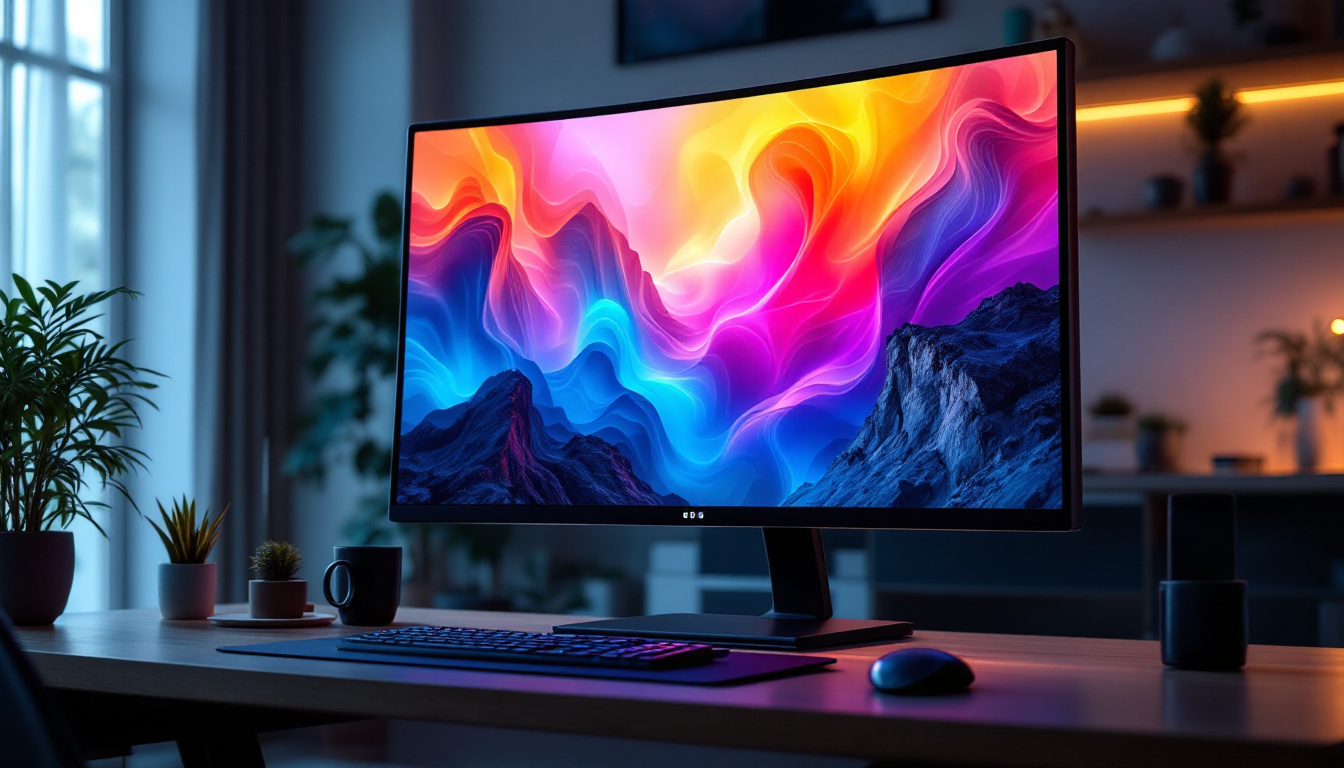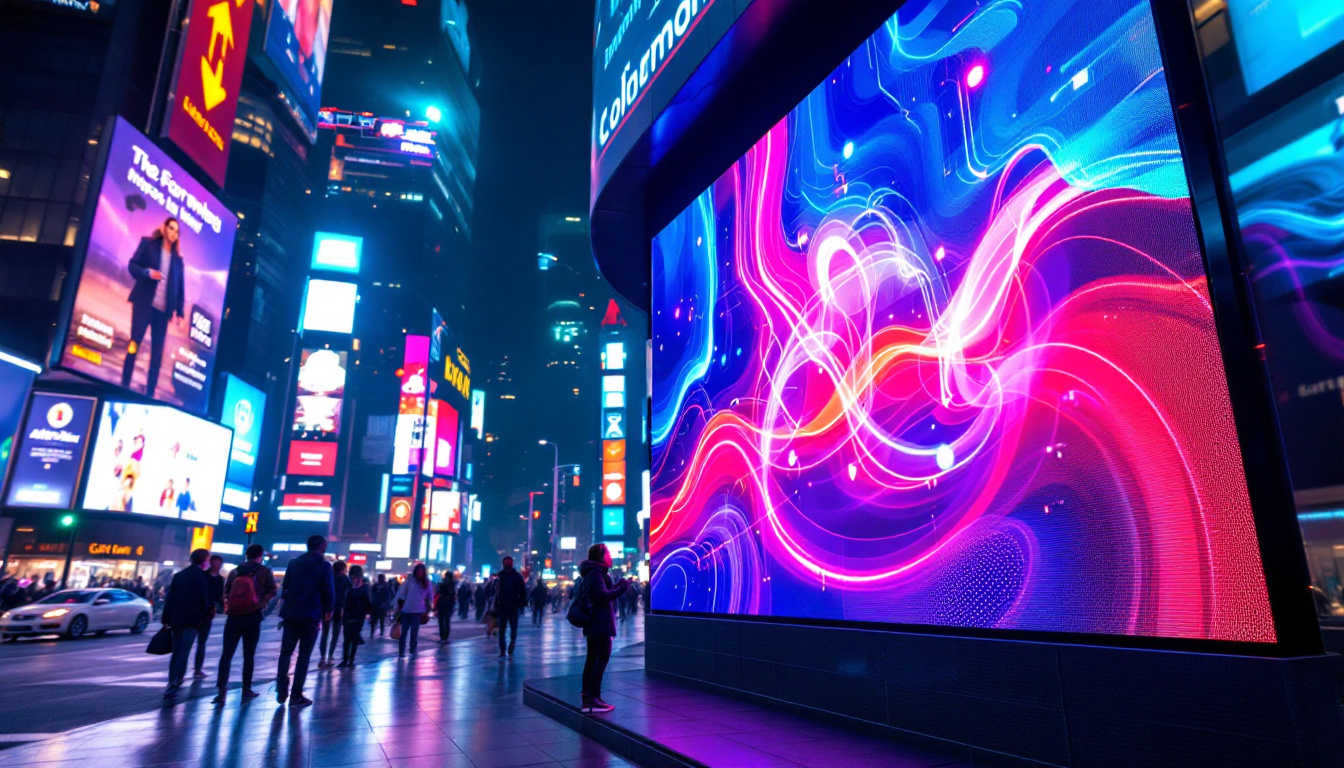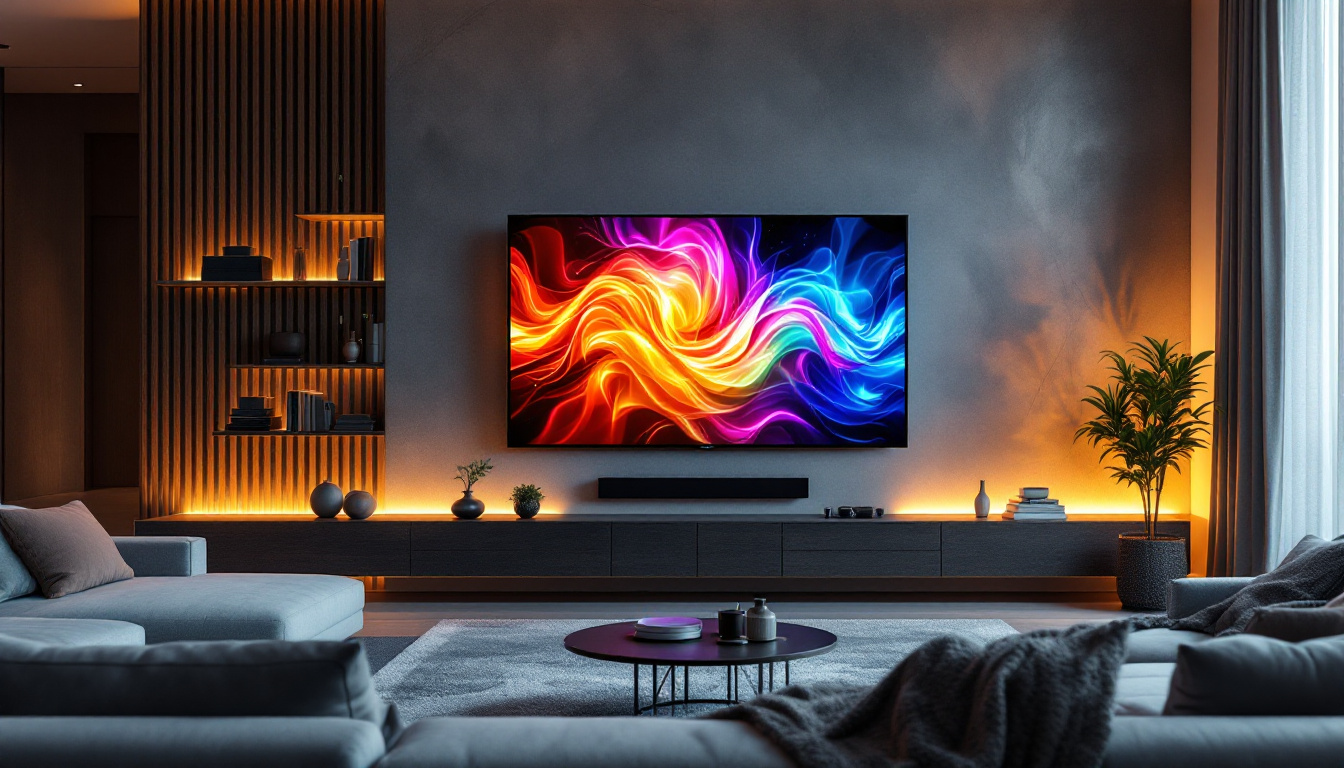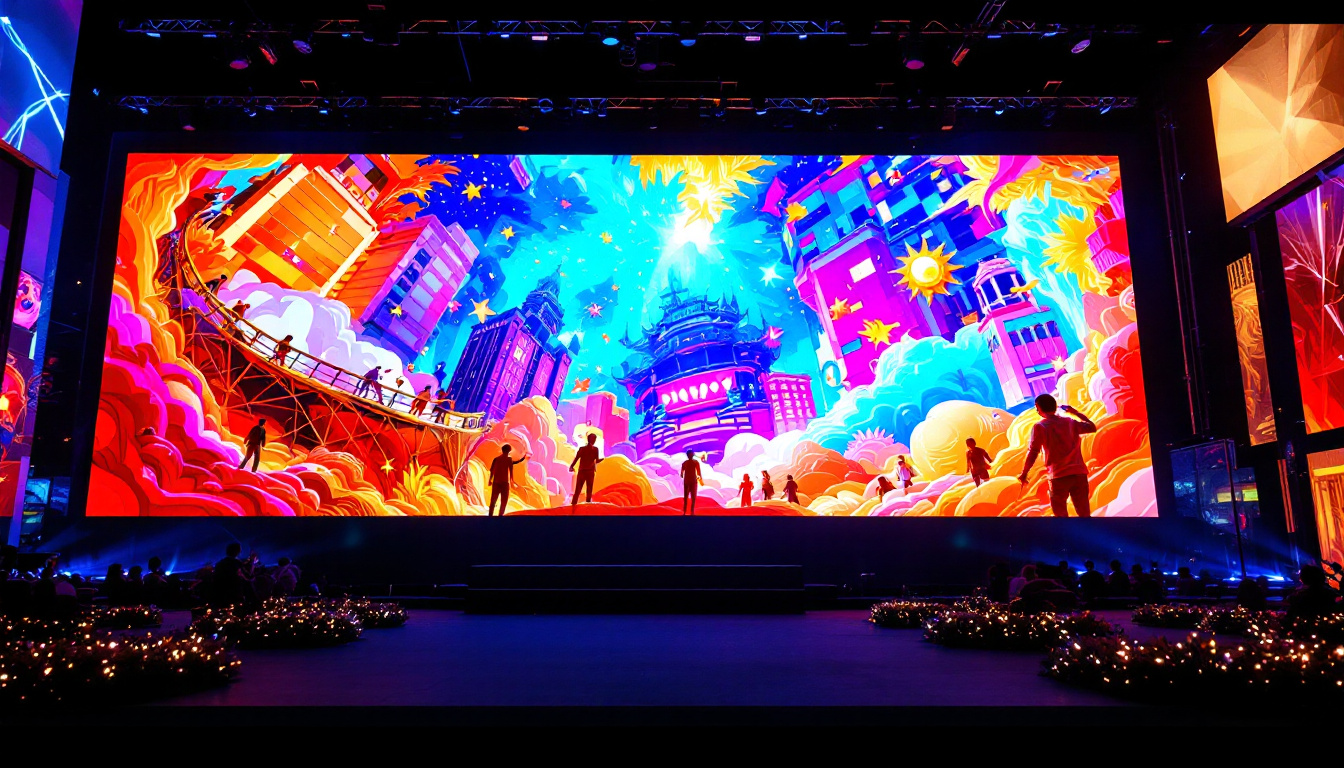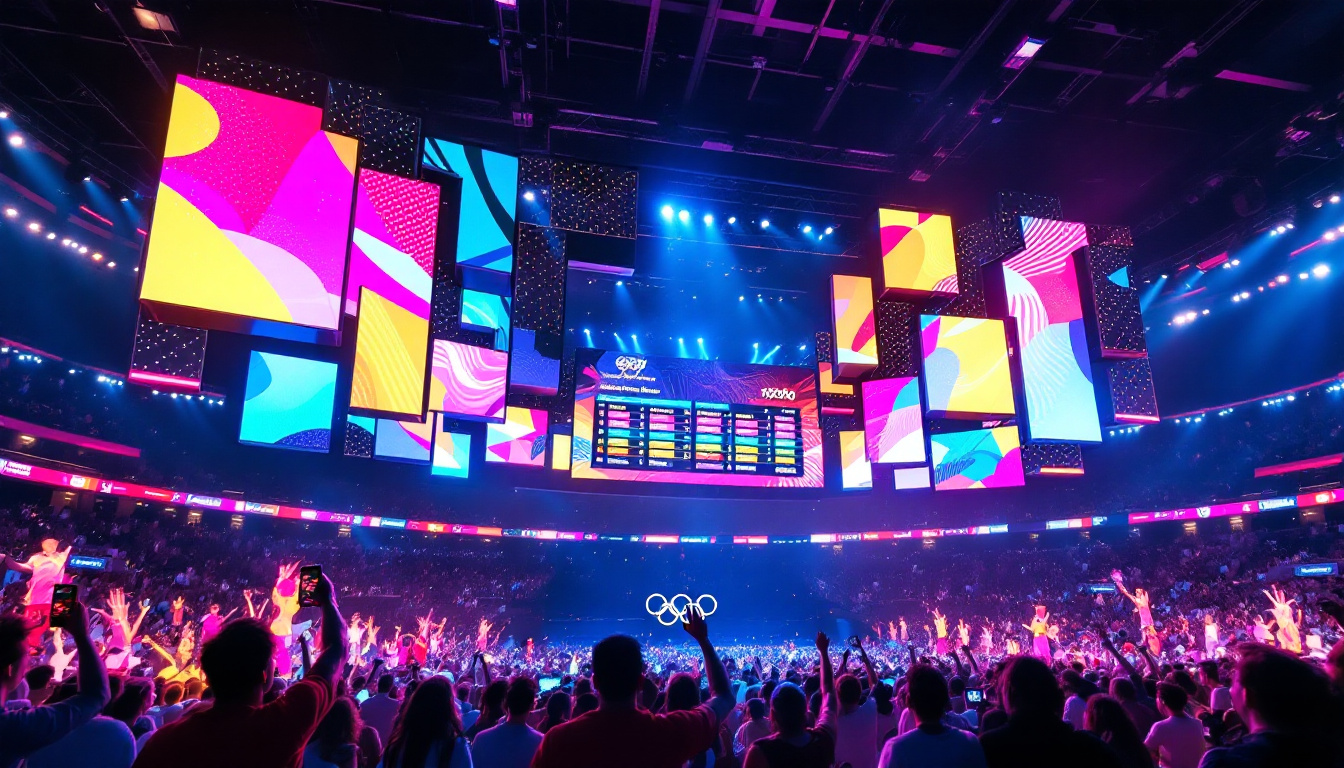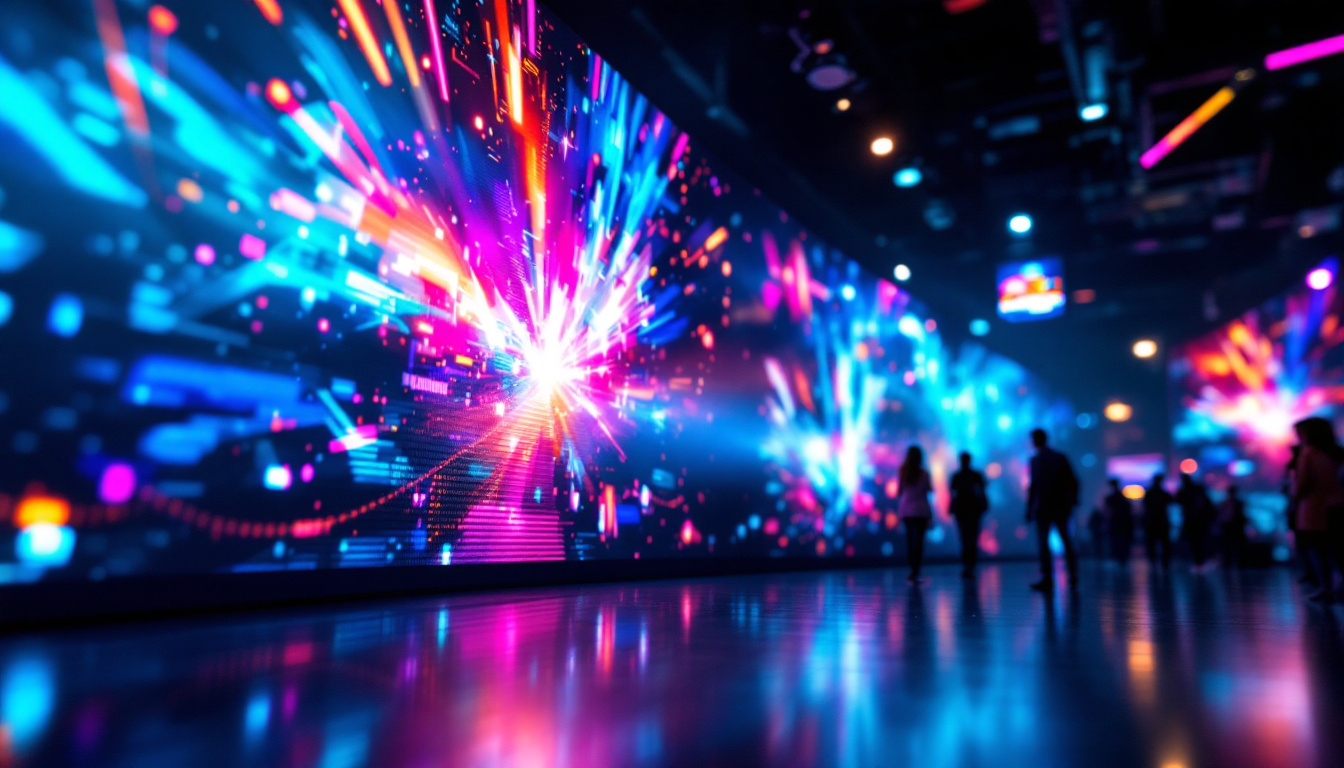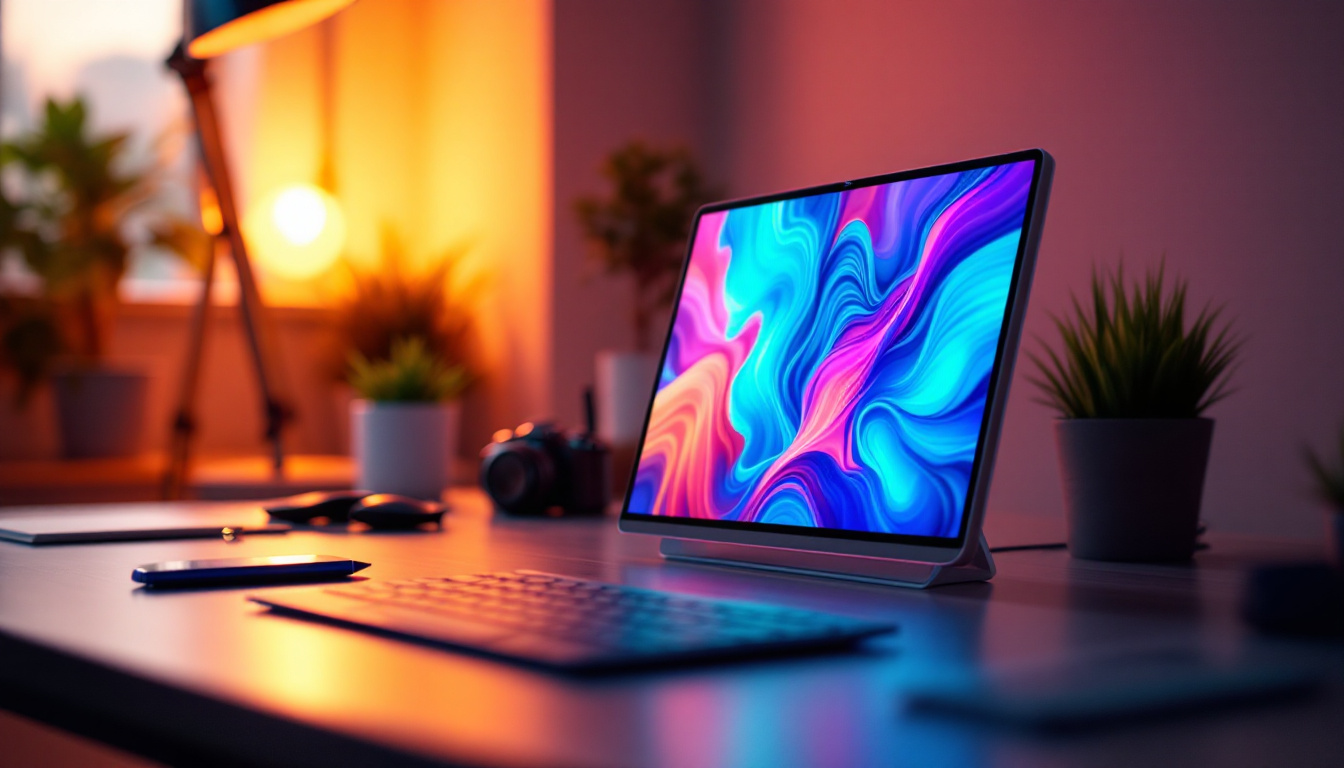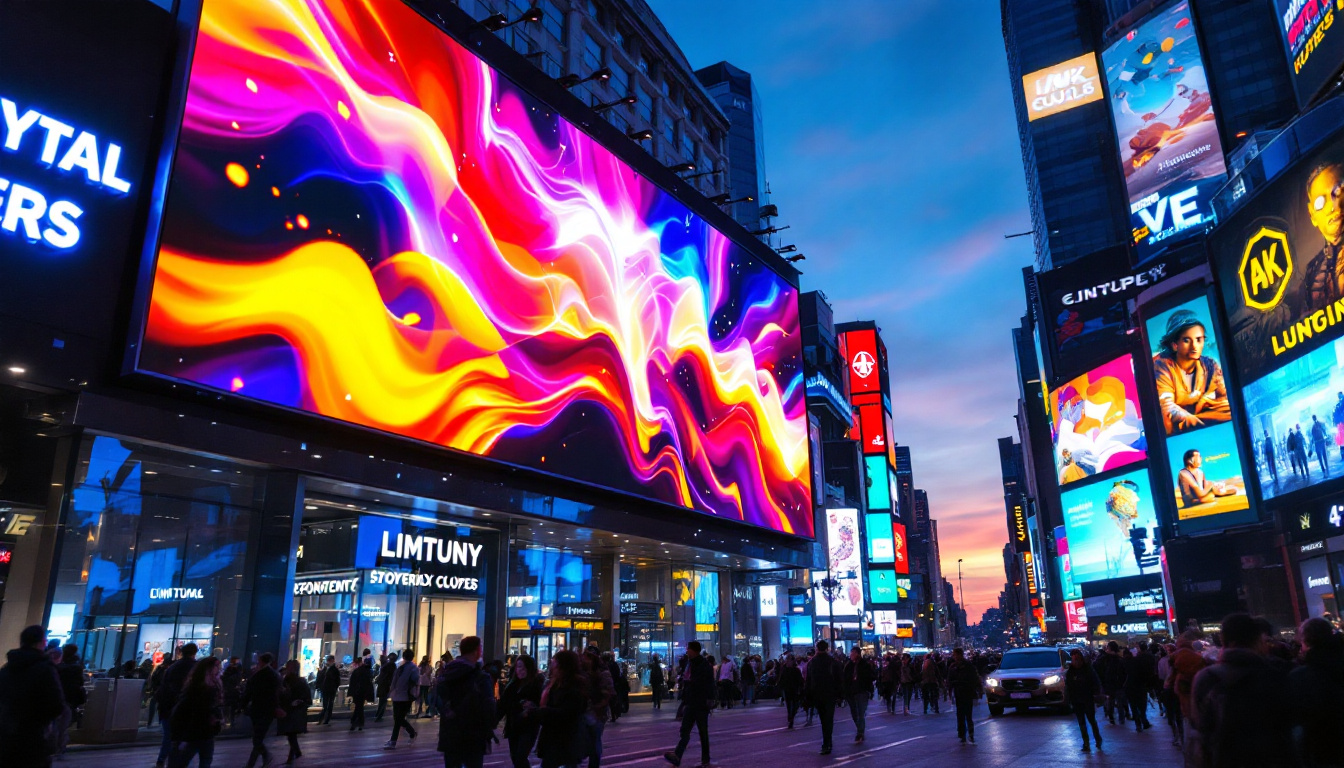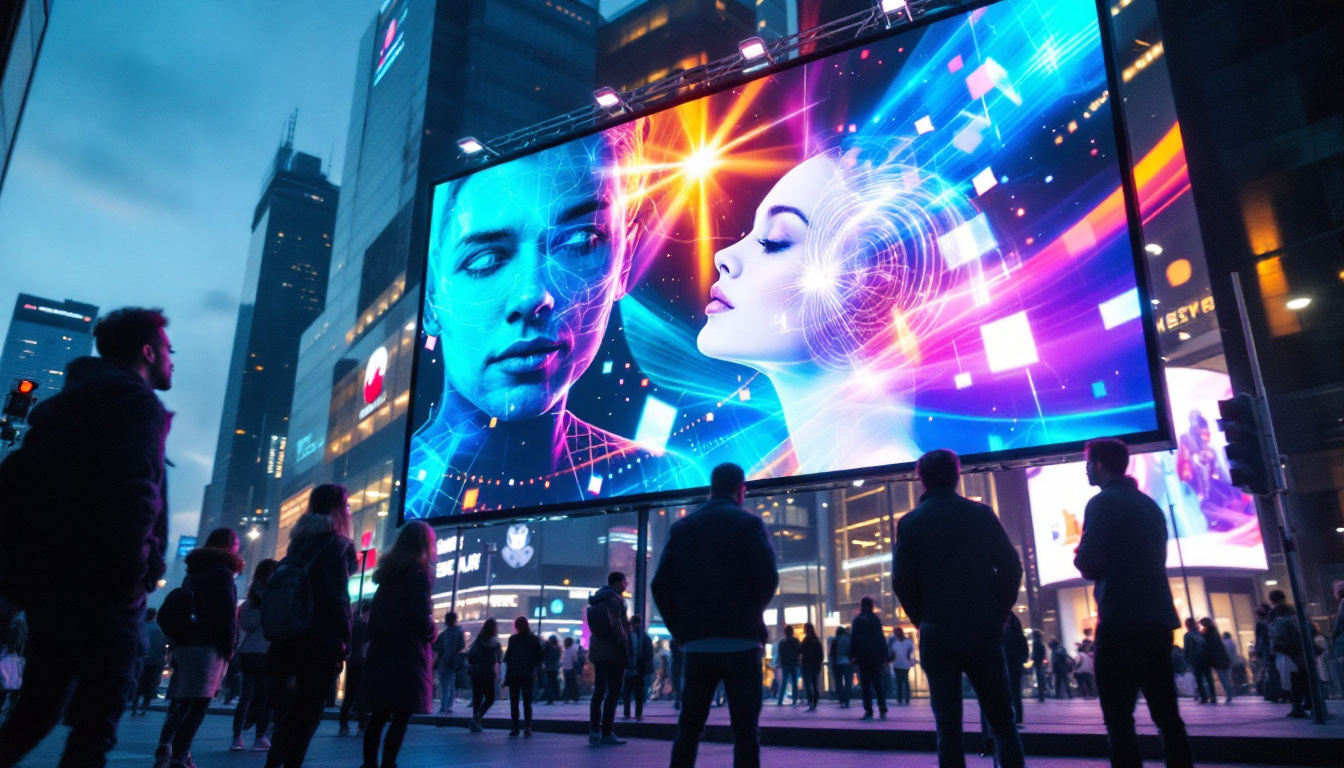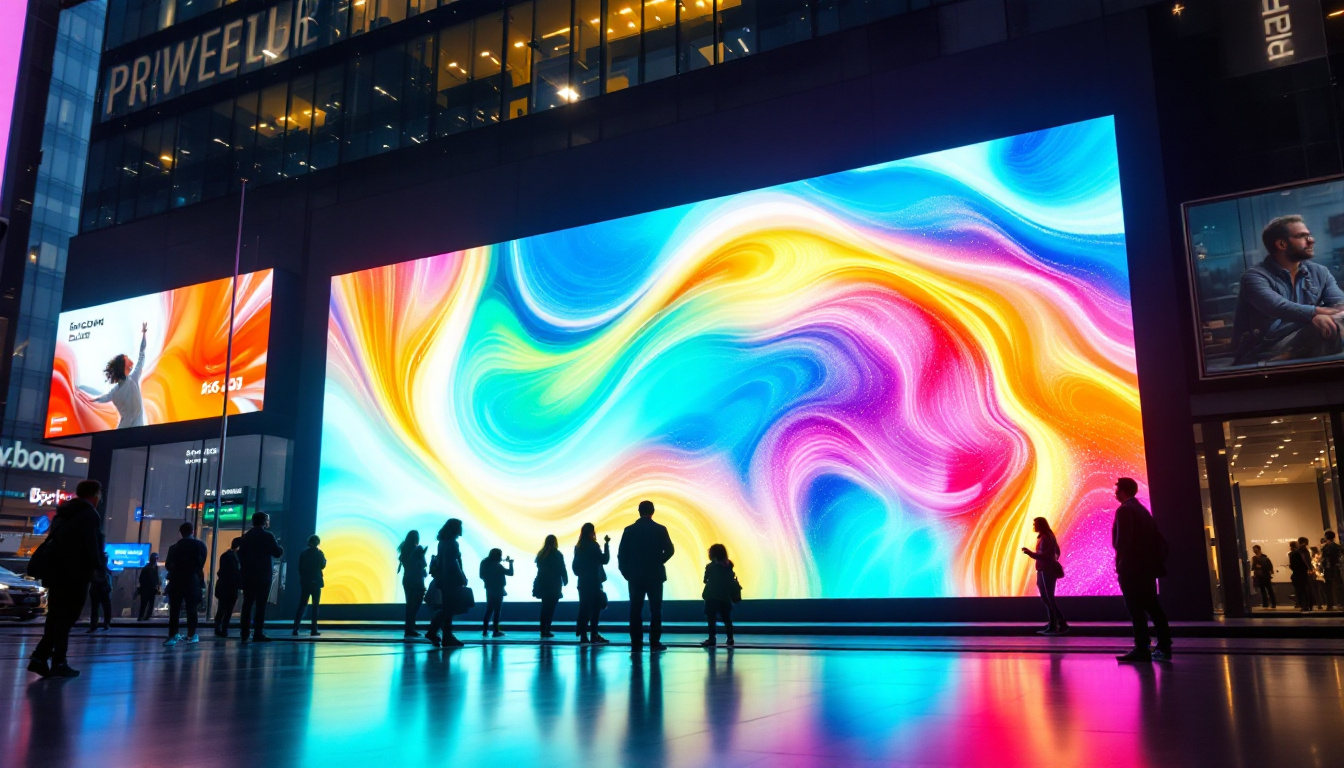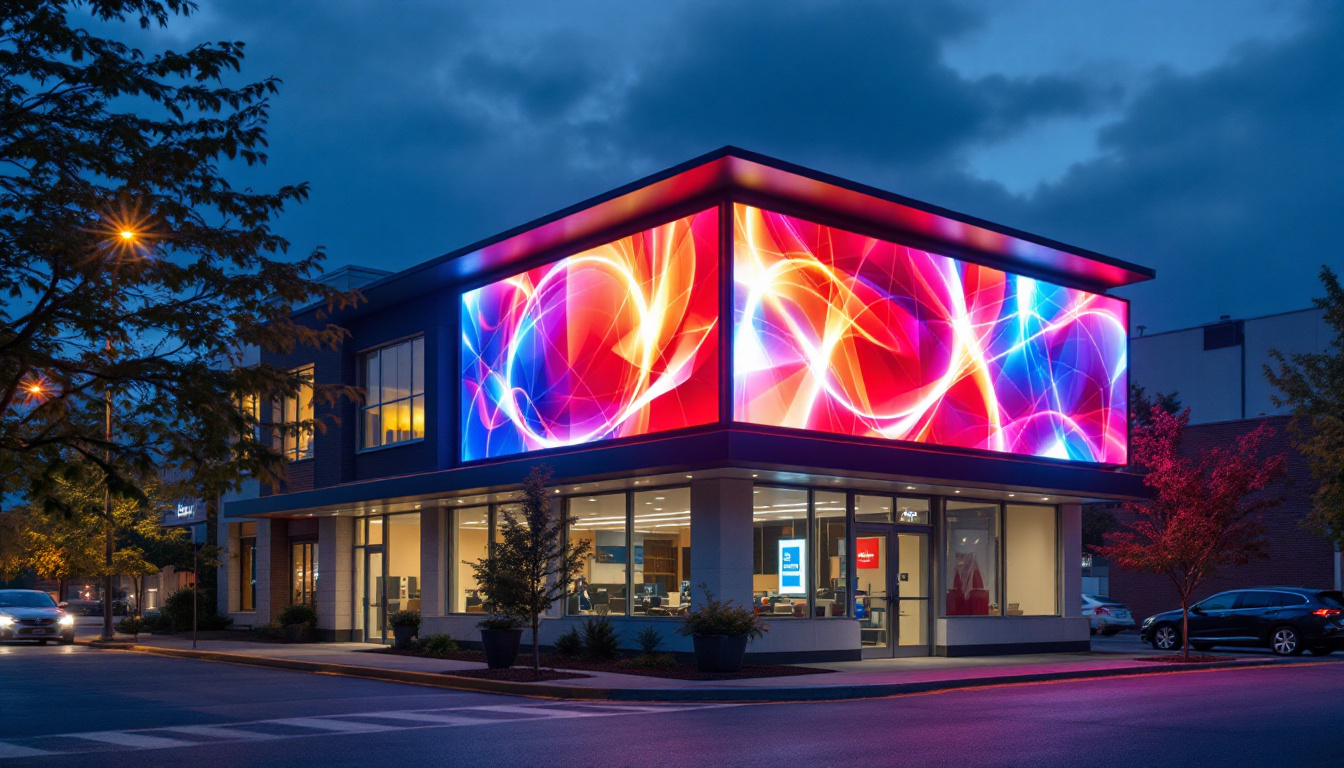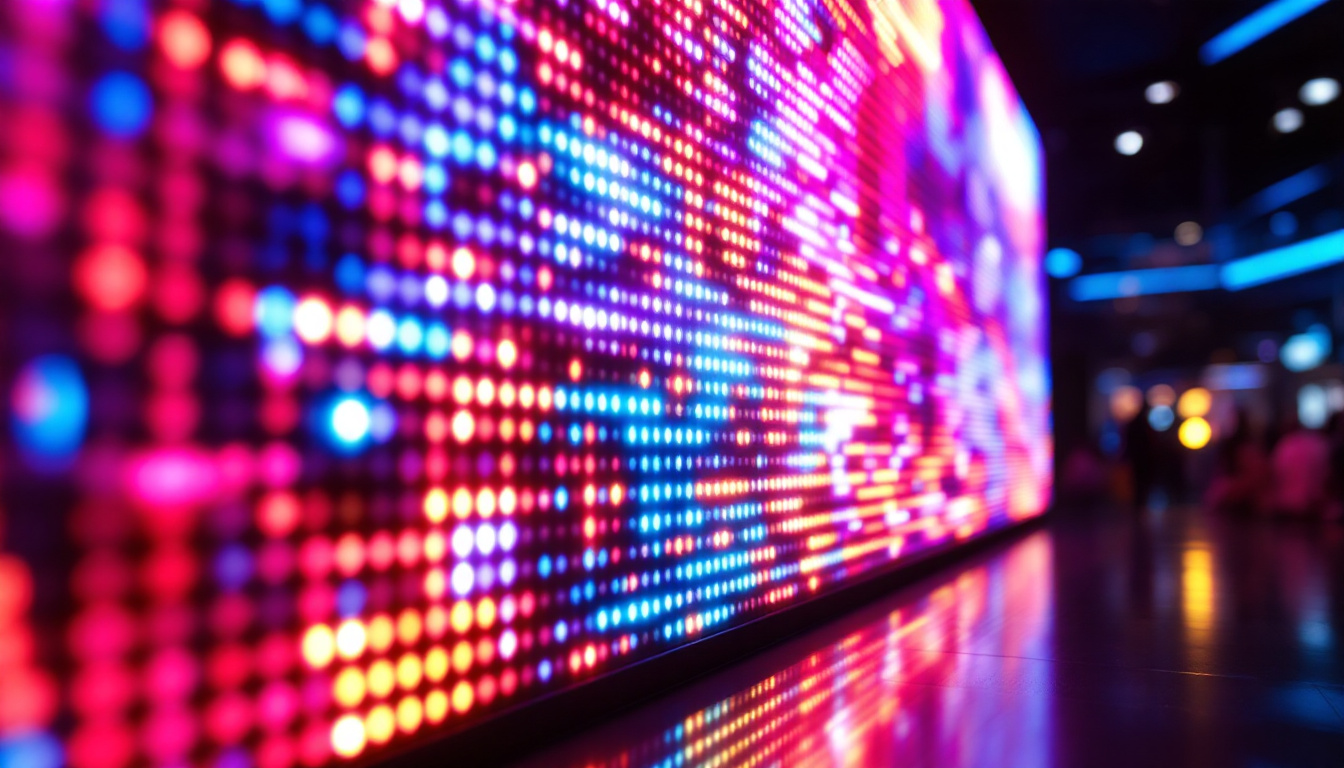In the realm of modern display technology, lattice screen panels have emerged as a significant innovation, particularly in the context of LED displays. These panels offer a unique blend of visual appeal and functional versatility, making them an ideal choice for various applications, from advertising to architectural design. This article delves into the intricacies of lattice screen panels, exploring their construction, advantages, and applications.
Understanding Lattice Screen Panels
Lattice screen panels are essentially frameworks that utilize a grid-like structure to support LED display technology. The design is not only aesthetically pleasing but also functional, allowing for a range of configurations and uses. The panels are composed of multiple smaller LED modules, which work together to create a cohesive visual experience.
Construction of Lattice Screen Panels
The construction of lattice screen panels involves several key components that contribute to their effectiveness. Typically, these panels are made from lightweight materials such as aluminum or plastic, which provide durability without adding excessive weight. The lattice structure itself allows for easy ventilation and heat dissipation, essential for maintaining optimal performance in LED displays.
Each LED module within the panel is carefully arranged to ensure uniform brightness and color consistency. This modular design also facilitates easy repairs and replacements, as individual modules can be accessed without needing to dismantle the entire panel. Furthermore, the lattice configuration allows for flexibility in installation, whether mounted on walls, suspended from ceilings, or even integrated into outdoor environments, adapting seamlessly to various architectural styles.
How LED Technology Works
At the heart of lattice screen panels is LED technology, which stands for Light Emitting Diode. LEDs are semiconductor devices that emit light when an electric current passes through them. This technology is known for its energy efficiency, long lifespan, and ability to produce vibrant colors.
In a lattice screen panel, multiple LEDs are arranged in a grid pattern, allowing for dynamic displays that can show a range of content, from static images to full-motion video. The ability to control each LED individually enables intricate designs and animations, making these panels particularly appealing for advertising and entertainment purposes. Additionally, advancements in LED technology have led to the development of smart panels that can adjust brightness and color based on ambient light conditions, further enhancing their versatility and effectiveness in various settings.
Moreover, the integration of advanced software systems allows for real-time content management, enabling users to update displays on-the-fly. This capability is especially beneficial for businesses that need to adapt their messaging quickly, such as during promotional events or seasonal campaigns. The combination of high-resolution displays and interactive features, such as touch sensitivity or motion detection, further elevates the user experience, making lattice screen panels a powerful tool for engagement in both public and private spaces.
Advantages of Lattice Screen Panels
Lattice screen panels offer numerous advantages that make them a preferred choice for various applications. Understanding these benefits can help businesses and designers make informed decisions about their display needs.
Visual Impact
One of the most significant advantages of lattice screen panels is their visual impact. The combination of LED technology and the lattice structure creates stunning displays that can capture attention effectively. Whether used in a retail environment or at an event, these panels can convey messages in an engaging and memorable way.
Furthermore, the ability to customize the size and shape of the panels allows for creative installations that can fit any space. This flexibility makes them suitable for both indoor and outdoor environments, adapting to various lighting conditions and audience sizes.
Energy Efficiency
Energy efficiency is another critical benefit of lattice screen panels. LED technology consumes significantly less power compared to traditional display options, such as incandescent or fluorescent lights. This reduced energy consumption not only lowers operational costs but also contributes to a more sustainable approach to advertising and display.
Moreover, the longevity of LED components means that replacements are less frequent, further enhancing the cost-effectiveness of using lattice screen panels over time.
Ease of Installation and Maintenance
The modular design of lattice screen panels simplifies both installation and maintenance. Each panel can be quickly assembled on-site, and the lightweight materials make handling and positioning straightforward. Additionally, if a module fails, it can be replaced without disrupting the entire display, minimizing downtime and maintenance costs.
This ease of maintenance is particularly beneficial for businesses that rely on continuous operation, ensuring that their displays remain functional and visually appealing with minimal effort.
Applications of Lattice Screen Panels
The versatility of lattice screen panels allows them to be utilized in a wide range of applications. From commercial advertising to artistic installations, these panels have proven their worth across various industries.
Advertising and Marketing
In the advertising sector, lattice screen panels have become a staple for businesses looking to promote their products and services dynamically. The ability to display high-resolution images and videos in vibrant colors makes them an effective tool for capturing consumer attention.
These panels can be strategically placed in high-traffic areas, such as shopping malls, airports, and city centers, ensuring maximum visibility. Additionally, the content can be updated remotely, allowing businesses to tailor their messaging to current promotions or events.
Architectural and Interior Design
Beyond advertising, lattice screen panels have found their way into architectural and interior design. Their unique aesthetic appeal can enhance the visual identity of a building or space. Designers often incorporate these panels into facades, lobbies, and event spaces to create a modern and engaging atmosphere.
Moreover, the ability to customize the panels allows architects to integrate them seamlessly into their designs, contributing to the overall aesthetic without compromising functionality.
Entertainment and Events
In the entertainment industry, lattice screen panels play a pivotal role in creating immersive experiences. From concerts to corporate events, these displays can be used to showcase live performances, presentations, and interactive installations.
The dynamic nature of LED technology allows for stunning visual effects that can enhance the overall experience for audiences. Additionally, the flexibility of the panels means they can be configured in various shapes and sizes to suit different venues and event requirements.
Challenges and Considerations
While lattice screen panels offer numerous advantages, there are also challenges and considerations that potential users should be aware of. Understanding these factors can help in making informed decisions regarding their implementation.
Cost Implications
Investing in lattice screen panels can involve significant upfront costs, particularly for high-quality LED technology. While the long-term benefits may outweigh these initial expenses, businesses must carefully evaluate their budgets and financial projections before making a commitment.
Additionally, ongoing maintenance and potential upgrades should be factored into the overall cost analysis to ensure that the investment remains viable over time.
Environmental Considerations
Despite their energy efficiency, the production and disposal of LED components can have environmental implications. It is essential for businesses to consider sustainable practices when sourcing materials and disposing of outdated technology.
Choosing manufacturers that prioritize eco-friendly practices and recyclable materials can help mitigate some of these concerns, contributing to a more sustainable approach to display technology.
Technological Advancements
The field of display technology is continually evolving, with new advancements emerging regularly. Staying updated on the latest trends and innovations is crucial for businesses looking to leverage lattice screen panels effectively.
Investing in outdated technology can lead to missed opportunities and increased operational costs. Therefore, businesses should remain vigilant and consider future-proofing their investments by selecting adaptable and upgradable solutions.
Future of Lattice Screen Panels
The future of lattice screen panels appears promising, with ongoing advancements in LED technology and display design. As consumer demands evolve and new applications emerge, these panels are likely to become even more versatile and integrated into various aspects of daily life.
Integration with Smart Technology
One of the most exciting prospects for lattice screen panels is their potential integration with smart technology. As the Internet of Things (IoT) continues to expand, the ability to connect displays to networks and control them remotely will enhance their functionality.
This integration could lead to more interactive and personalized experiences for users, allowing businesses to tailor their content based on real-time data and audience engagement.
Enhanced Interactivity
Future developments may also focus on enhancing the interactivity of lattice screen panels. Incorporating touch-sensitive technology or augmented reality features could create immersive experiences that engage audiences in new ways.
Such advancements would not only elevate the visual appeal of displays but also encourage audience participation, making them more effective for marketing and entertainment purposes.
Continued Customization
As design trends evolve, the demand for customizable lattice screen panels is likely to grow. Manufacturers may offer more options for shapes, sizes, and finishes, allowing businesses to create unique installations that reflect their brand identity.
This trend towards personalization will enable businesses to stand out in a crowded marketplace, enhancing their visual presence and engagement with consumers.
Conclusion
Lattice screen panels represent a significant advancement in display technology, offering a compelling combination of visual impact, energy efficiency, and versatility. Their applications span various industries, from advertising to architecture, making them a valuable asset for businesses looking to enhance their visual communication strategies.
While there are challenges to consider, the benefits of lattice screen panels far outweigh the drawbacks, particularly as technology continues to evolve. As the future unfolds, these panels are poised to become even more integral to our visual landscape, paving the way for innovative and engaging experiences.
In conclusion, embracing lattice screen panels not only positions businesses at the forefront of display technology but also opens up a world of creative possibilities that can captivate audiences and drive engagement.
Discover LumenMatrix LED Display Solutions
Ready to elevate your visual communication and create an unforgettable impact? Explore LumenMatrix’s comprehensive range of LED display modules, designed to bring your brand to life. From captivating Indoor and Outdoor LED Wall Displays to innovative solutions like Vehicle LED Displays, LED Posters, and even LED Sports and Floor Displays, LumenMatrix is at the forefront of transforming environments with vibrant, energy-efficient technology. Whether you’re looking to customize your display or seeking an All-in-One solution, LumenMatrix has you covered. Experience the future of digital signage and make a lasting impression. Check out LumenMatrix LED Display Solutions today and see how we can help you share your message with the world.

